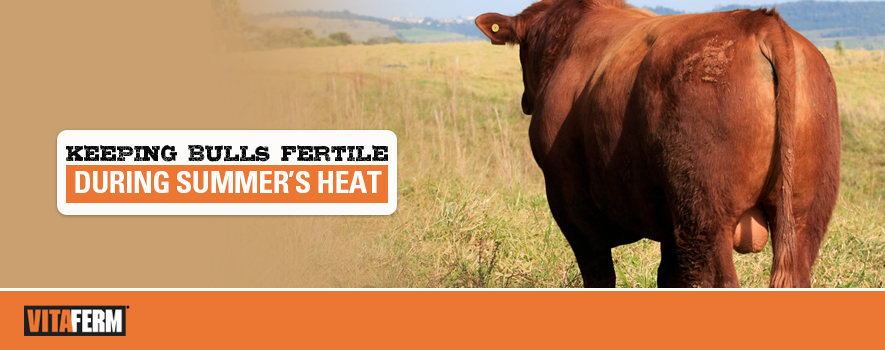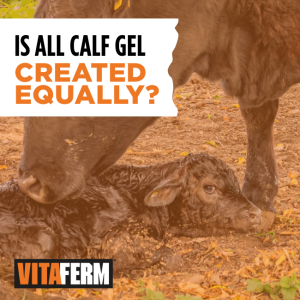
When we think about reproduction in the herd, our first thoughts immediately shift to the cows. Are they at the proper body condition to breed? When do we need to synchronize and breed them to hit our target calving window? However, the bulls contribute their genetics to each calf, and work harder than the cows at breeding time usually covering 20-30 cows per breeding season.
The summer months can be the most challenging time to keep, maintain and develop bulls due to the excessive temperatures. It doesn’t matter if you are preparing to turn out bulls now for breeding to get those March and April calves, maintaining your bulls over the summer until the next breeding season or growing and developing young bulls, the high temperatures can play havoc on reproductive performance in your sires.
Heat causes stress, and anytime stress exists, spermatogenesis (production of sperm) and sperm quality are negatively impacted. In addition to the quality and quantity of sperm being reduced, sperm motility, concentration and total number of sperm per ejaculate are all negatively affected.
The negative effects on semen quality are not usually realized for 45 to 60 days after the stress occurs since the testes and tubules store an abundant amount of sperm. That is why it is always important to have a thorough breeding soundness exam 30-60 days before turning out bulls with cows.
In addition to sperm production, heat stress can cause a lack of libido in bulls. Although both shade and fresh water are important tools to combatting heat stress, you don’t want your cattle spending all their time in those two places according to Ron Hinrichsen, Director of Beef Sales and Marketing at Genex.
“When the bulls are hot and unable to cool themselves down, they tend to stand in ponds or under shade. Cattle just aren’t performing, regardless if they are a bull or female, if they are standing under a tree or out in a pond,” Hinrichsen said.
In addition to fresh, plentiful water and adequate shade, there are other ways to help reduce heat stress. Keep your bull to cow ratio no more than 1:30 and reduce the number of cows per bull, if possible, during the hot summer months or if using yearling bulls. Too many cows per bull will add stress to the bull and may lead to lower conception rates.
Buy bulls that are suited to the environment. If you are in a hotter environment or in fescue country, look for bulls that shed well and have a slick hair coat, leaving them cooler than a haired-up bull.
Finally, make sure your bulls have a good nutrition program in place that includes a high-quality mineral. Often, younger bulls are purchased in a bull sale where they have been on a high plane of nutrition. When they stay on a grain diet until it is time for turn out their rumen must quickly adjust to a total forage diet, adding yet another stressor.
Kevin Glaubius, Director of Nutrition at BioZyme® Inc., suggests transitioning bulls, especially younger bulls from a grain-based to forage-based diet at least 30 days prior to turn-out, and supplementing them with a mineral like VitaFerm® HEAT®. Then, when they are turned out with cows, that nutritional transition is one less stressor on the bulls.
VitaFerm HEAT is a line of vitamin and mineral supplements for beef cattle used to reduce heat stress during temperatures of 70 degrees and above, or anytime cattle are grazing fescue. HEAT contains both Amaferm® and Capsaicin, both research-proven to help maintain normal body temperature, and therefore lead to more active bulls. HEAT also includes garlic, to deter insects. Amaferm is a natural prebiotic designed to maximize the nutritional value of feed. So, in addition to helping bulls maintain normal body temperature, Amaferm also helps ensure that he has the energy to continue breeding cows.
Holly Meyer, with the BUB Ranch near Koshkonong, Mo., said the BUB Ranch bulls are fed VitaFerm HEAT mineral in the summer to reduce the heat stress during their critical growth period. At BUB Ranch, they do their first fertility check on the bulls between 11.5 and 13 months of age.
“When we semen check those bulls in October, we know they have produced that semen up to 90 days earlier, so as early as August 15. If we can keep their body temperatures cooler, their semen quality will be higher, and they will be ready to go in the fall,” Holly said. She added that the need to recheck semen quality is timely and expensive, yet more reasons the VitaFerm HEAT mineral is so important to their operation.
Cattle producers can’t control Mother Nature or the extreme temperatures she throws their way in the summer, but they can help reduce the added heat stress that their herd endures. Keeping bulls active and fertile during the heat of the summer isn’t always easy, but with some simple management practices and a good nutrition program, the challenge of keeping the bulls cool and keeping them breeding becomes a little more efficient.


